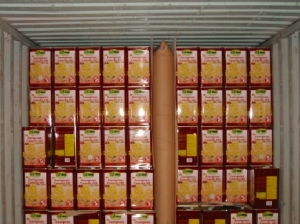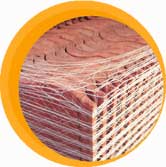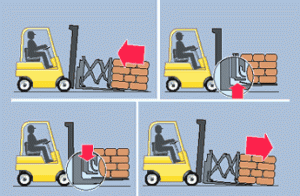

There has always been an ongoing debate as to which is better. To answer this, we need to look at the background of the development of the dunnage bags.
The paper dunnage bag was introduced in the 1950’s and was a big advancement over the 1st generation rubber dunnage bag. It is lighter,easier to use, and much cheaper so it can be discarded after each use. There is no need to collect back the dunnage bags at the destination for re-use.
In step with the advancement of plastic technology , plastic has quickly replaced paper in most areas . So in the 1990’s the 3 rd generation woven polypropylene (WPP) dunnage bag was introduced. The WPP dunnage bag quickly gain acceptance and has since grabbed the lion’s share of the dunnage bag market.It’s advantages over the paper dunnage bag are lighter, stronger, waterproof and cheaper .
The paper dunnage bag supporters have put up the following major arguments :
1)We have used paper dunnage bags for decades and have no problem with them.
2)The paper dunnage bag is thicker and heavier so it can resist puncture better.
3)The surface of the wpp dunnage bag is smoother so it can easily slip out during transportation .
4)The paper dunnage bag is more resistant to chemicals.
Nothing can be done about Argument #1 so we move on to the other 3 arguments.
Paper Dunnage Bags Are More Puncture Resistant
All types of dunnage bags are filled with compressed air and so can be punctured by sharp objects . To minimise the risk , it is recommended that the user take the following precautions :
1. Remove or cover any sharp edges that may come into contact with the inflated dunnage bag during container stuffing.
2. Sandwich the dunnage bag between 2 sheets of cardboard , plywood or chipboard ( new or recycled) before installing it between the cargo loads. The boards also serve to distribute the pressure evenly onto the cargo loads.
The Surface Of The WPP Dunnage Bag Is Smoother So It Can Easily Slip Out
There are 2 possible scenario where the dunnage bag,whether paper or wpp, can slip out during transportation:
1. Installing 2 dunnage bags side-by-side as the void between the cargo loads is too big. This is a no-no in installing the dunnage bags as during transportation the rocking and vibrations will cause one of the dunnage bags to slip out. If the void is too big, user may need to install one dunnage bag on either side of the cargo load(s). Or use solid void fillers to reduce the void size before installing the dunnage bags.
2. Underinflation.If the dunnage bag is under-inflated , then it will slip out during transportation . It needs to be inflated until the cargo loads on both sides are pressing hard against it thus holding it in place even during transportation.
The Paper Dunnage Bag Is More Resistant To Chemicals
Both the paper and wpp dunnage bag contain an inner PE liner bag which holds the compressed air during inflation. This liner bag is about 1 micron thick.If the chemical is corrosive , both types of bag will be damaged .Anyway, there are special guidelines governing transportation of hazardous chemicals as there are great risk to the people handling them .
The WPP dunnage bag is the market leader by a wide margin and growing . So, the majority of the users must be onto something . It pays for us to take note of the trend. The end user has to look at his situation objectively and evaluate which bag is most cost effective for him. Dunnage bags are added overhead cost and need to be managed as well.




































